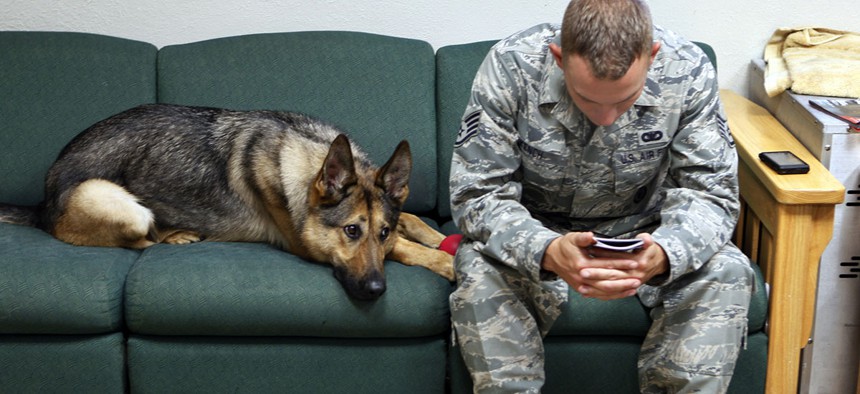Veterans Calling VA's Crisis Line Can Finally Get Through. Here’s Why.

Ed Andrieski/AP
A team of techies and customer-service professionals starting tackling the problem in 2015.
Just a year ago, troubled veterans who called seeking the Veterans Affairs Department crisis line were greeted with an off-putting message that may have caused more harm than good.
“It would literally say, ‘If you’re having thoughts of suicide, hang up and dial a 1-800 number,” said Scott Blackburn, interim deputy secretary at VA. “That was the response one year ago.”
Not surprisingly, Blackburn said 30 percent of the veterans attempting to connect to the crisis line would drop off—and the harsh reality is 20 veterans commit suicide nationwide every day.
» Get the best federal technology news and ideas delivered right to your inbox. Sign up here.
“Unacceptable,” Blackburn said, speaking Wednesday at ACT-IAC’s Customer Experience Summit.
Fixing this problem became one of the main early objectives of the VA’s Veteran Experience wing, created under former Secretary Robert McDonald in 2015. The wing is a mix of customer service professionals and techies, and it tackled VA’s communication problems immediately.
Today, veterans who call seeking VA’s crisis line are greeted with a message to “press 7” to connect to the crisis line, and the tweak has reduced the rollover rate to less than 1 percent, Blackburn said.
Blackburn said it’s also increased demand, leading to VA opening a second crisis hub in Atlanta in addition to a facility in New York. VA, he said, is answering 50 percent more crisis calls every day, buoyed because troubled veterans know someone will pick up the phone when they’re in need.
“We realized demand jumped,” Blackburn said. “It’s great because we’re helping more people but it was bad because weren’t ready to handle that volume. That’s quite a transformation and this is happening very much in real time.”
In addition to the improved crisis line, Blackburn said VA has vastly improved response times of its benefits national call center. In January 2016, 59 percent of the calls made to the call center were blocked, and those lucky veterans who got through spent minutes or hours on the phone waiting for answers.
“We couldn’t even measure the abandonment rate because it was so high,” Blackburn said.
One year later, the average response time—when a call is answered by a person in a call center—is less than 2 minutes, while the abandonment rate is down to a manageable 3 percent. And, importantly, the call center doesn’t block any veteran’s calls anymore.
Spearheaded by the VE wing in collaboration with about two dozen members of the U.S. Digital Service, VA has also introduced MyVA311, a single phone number (1-844-MyVA311), Blackburn said. Vets can call the toll-free number to figure out which of the nearly 1,000 VA phone numbers they actually need.
“We used to have 975 1-800 numbers,” said Blackburn, noting vets often had to memorize a half-dozen or more phone numbers to receive the care they needed. “That’s just absolutely insane.”



